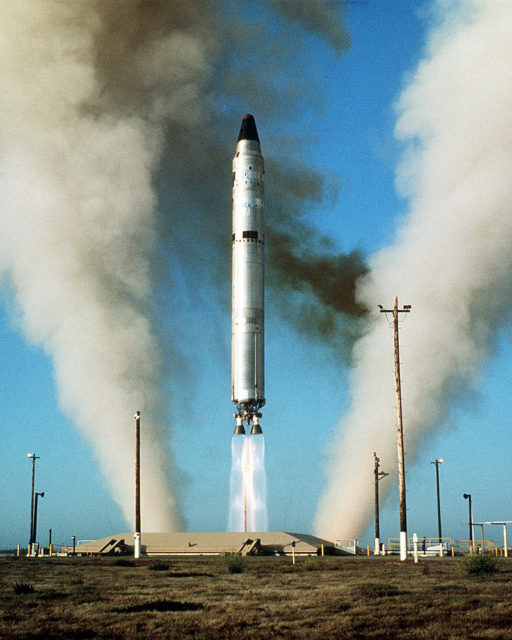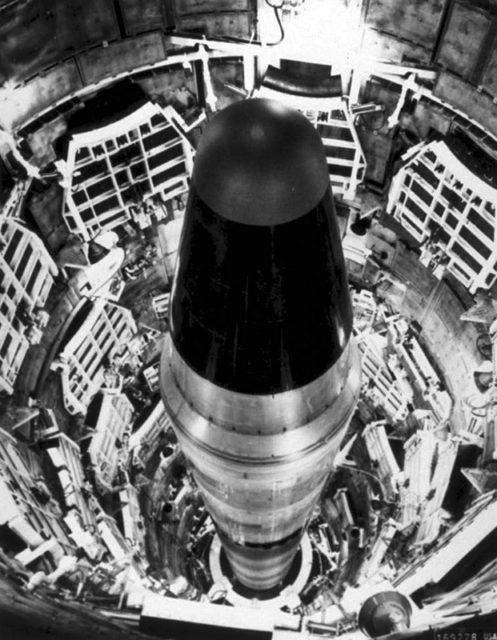On September 18, 1980, one of the scariest human-error events unfolded at Launch Complex 374-7 at Damascus, Arkansas. It wasn’t hidden from the media, but it was played down quite significantly, so the populace in the area and throughout the United States had no idea how close they had come to a nuclear disaster.
If the warhead had exploded, the fallout would have stretched from the mid-south to the east coast, killing millions of people. The Titan II missile was a very large nuclear warhead that was nine megatons. Greg Devlin, a survivor of the explosion, says that the Titan II missile is three times as powerful as all the bombs dropped in World War II, including the bombs dropped on Hiroshima and Nagasaki.

On an earlier shift that day, two Propellant Transfer System technicians were in the silo, partway through fixing a low-pressure fault, when they discovered they had forgotten to bring a torque wrench. It was considered a simple job to pressurize the upper-stage tank on the Titan II. Instead of fetching the torque wrench, the technician did what had been standard practice for years – he tried to disconnect a cap with the socket wrench he had. The wrench was not working as it should have and the nine-pound socket fell off. The weight of the socket was such that it went through the seal between the missile and the work platform and fell about 70 feet, where it bounced off the stand that held the missile upright and smashed into the base of the missile, puncturing a hole in it. Immediately, high-pressure toxic fuel started to spray out.
The base was evacuated, and the blast doors were closed, leaving the missile alone and the silo filling with the fuel. Greg Devlin and Rex Hukle were ordered to break into the complex and get readings of the leaked fuel. The pair made it as far as the blast doors before they had to return up top for more air, since their air packs only held half an hour’s worth. Teammates Dave Livingston and Jeff Kennedy then went down and managed to open the blast doors. Kennedy went into the room that contained so much vapor from the fuel it was eating at his suit; he confirmed that the detectors had eight red warning lights showing and the readings in the silo were maxed out. Both men fled the silo, returning safely above ground. Soon after, at about 3 am, the missile and silo exploded.

The blast wave hit Devlin and launched him backwards over the road for about 60 meters. He recalls seeing steel and concrete flying past him, and he thought he was going to die. Someone screamed for him to run and he did. A huge chunk of concrete the size of a school bus landed where he had just been lying, and more debris came at him. He was hit by a rod of steel rebar that shattered his ankle. He also had severe burns on his face, neck, and back. Livingston and Kennedy were presumed dead, being so much closer to the blast zone, but they were eventually rescued. Livingston died within 12 hours of the explosion even though he had reached a hospital. He was the only fatality of the explosion.
There are photos which show the “before and after” of the explosion. The before shot shows a rather bland area of flat ground with a white flat lid above where the missile is hidden away. Afterward, the area was completely blown up, the mouth of the silo was gaping wide, and there was detritus thrown far and wide. Windows in nearby areas were blown out, and the warhead had been blown out of the silo, landing in a ditch not more than 50 feet from Devlin.
The reason it is making such a huge splash media-wise is that the nonfiction book called Command and Control, written by investigative reporter Eric Schlosser, has been made into a documentary film of the same name. The film was only able to come about through a collaboration between the filmmaker Robert Kenner, the book author, and the US military, which let them have filming access to the last Titan II missile silo. With this access, the documentary was able to recreate events where images had not previously existed. They used actual exterior footage from the night of the accident and matched their film to it. Originally there had been 54 silos, and they were all identical, which is why the filming worked so well. There was a missile in the silo when they filmed, but it did not have a warhead or liquid fuel.

The film took a few years to make, as a large component of it consisted of interviews with the survivors of the explosion. David Powell, the worker who accidently dropped the socket, was very hesitant to talk about the events. As you could imagine, the events have affected Powell every day of his life; until the film was shown, his mother hadn’t even known about his part in the disaster.
Kenner states that this is a story about how humans make mistakes and how we have made this technology that, even though it is immense and advanced, still relies on us. Any human error can have devastating consequences. It is also a story of human bravery and the real heroes of the accident. The movie has been run on American television and is also available for purchase online.
